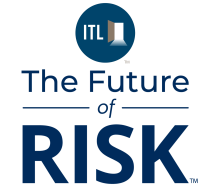Insurtech startups have sprung up like mushrooms since the Great Recession — a period when public confidence in the traditional financial sector hit rock bottom. Full-stack upstarts were seen as existential threats to their established insurance player counterparts struggling to adapt to the digital age.
Nearly a decade after the insurtech rush in the first half of the 2010s, investor interest in these challenger brands has waned. Many of these startups have had their fair share of legal troubles, revealing the cracks in their business models. Given the growth and decline of insurtechs, should they still keep traditional insurance companies up at night?
The Strengths of Traditional Insurers Are the Weaknesses of Unicorns
Rapid innovation is the calling card of insurtech startups. They exist to disrupt the status quo, identify problems and use advanced technologies to solve them.
Technologically agile competitors strike fear into the hearts of decision-makers at established insurance companies. Startups have prompted old-school senior executives to reconsider legacy thinking and move out of their comfort zones.
What insurtechs don't have going for them is operational stability. Their leaders can be serial entrepreneurs with no previous insurance background. Lemonade's Shai Wininger and Hippo's Assaf Wand are excellent examples.
Wininger founded and co-founded several tech ventures — including Trimus, Handsmart Software, Mobideo, Fiverr and Santa — before starting his crusade to revolutionize renters and homeowners insurance. Wand was the head honcho of Foris Telecom and Sabi before developing one of the first smart home insurance products.
These newcomers to the industry excel at innovation. However, they lack expertise in risk management and regulatory compliance. In contrast, incumbents shine in these areas because of their centuries of head start on their tech-driven competition.
The genesis of the American insurance industry dates back to the 18th century, and many of today's largest home insurance companies — such as State Farm, Allstate, Liberty Mutual, USAA and Farmers — are decades older than Lemonade and Hippo. Full-stack insurtech firms haven't been around the block enough times to recognize the fundamental flaws in their business models and iron out the kinks of their operational frameworks.
Poor Stock Performance — Investors Give Insurtech Enterprises a Reality Check
The turn of the 2020s was a watershed moment in the history of insurtech startups. Numerous full-stack unicorns went public between 2020 and 2021 to raise much-needed capital as they targeted profitability. Unfortunately for these newly minted publicly traded entities, the euphoria was short-lived.
Charles River Associates (CRA) compared the stock prices of 13 insurtechs against 18 traditional insurance companies that went public between 2015 and 2024. The consulting firm's two sets of findings were as different as night and day.
Most insurtech enterprises recorded negative returns against the S&P 500 (SPX) and the S&P 500 Insurance Industry Group indices three months and one year after their initial trading date. This trend persisted after examining these enterprises' historical stock prices up to April 30, 2024 — the date on which CRA compiled the data.
On average, insurtech stock prices plummeted 24% three months after their first trading date and 19% one year following their initial public offering (IPO) with or without a special purchase acquisition company (SPAC). The more time passed, the worse the drop was. From going public to April 30, 2024, 61% of the value of insurtech stocks vanished.
This phenomenon doesn't extend to the greater insurance industry. The noninsurtech stocks yielded impressive medium- and long-term returns. Their value jumped 33% one year after their initial trading date and 318% by April 30, 2024.
Many factors come into play when a stock chronically underperforms. However, no factors were as significant as getting involved in high-profile legal scandals.
Hippo Fuels Legal Arguments Against SPACs
Some insurtech unicorns used SPACs to go public for practical reasons. These blank-check companies promise fast execution, upfront price discovery, low marketing costs and quick access to operational expertise.
The problem is that SPAC mergers are subject to less scrutiny. The process requires less due diligence and can result in exaggerated valuations, which is what happened to Hippo after its ticker symbol floated on the New York Stock Exchange.
Hippo’s market capitalization was $5 billion when it went public. By September 2023, its valuation plunged by 96%, reducing its valuation to about $222 million. Mammoth withdrawals by the insurtech's SPAC investors triggered the decline.
Hippo's lackluster stock performance compelled the board to oust Wand as CEO in June 2022. The company’s stock launch also helped galvanize the SEC into imposing additional IPO-by-SPAC procedural and disclosure requirements to strengthen investor protections.
Increased oversight over SPACs should prevent future public companies from suffering the same fate as Hippo. However, the stigma of entering public markets through a SPAC has followed tech-first insurers — including those that chose the traditional IPO route.
Insurtech Firms Are Prone to Securities Class Action Litigation
The insurance industry is no stranger to lawsuits. All players — big and small — get in legal trouble on occasion. However, insurtechs account for a significant portion of securities class action litigation relative to their quantity.
Tech-first insurers are in the minority. There were 1,500 of them in 2024 — a tiny fraction of all regulated insurance companies in the U.S. This figure is only slightly higher than the average number of licensed foreign insurers per state at 1,403, according to the National Association of Insurance Commissioners.
According to CRA's insights, there were 39 Section 10(b) and 12 Section 11 filings in the insurance industry from 2015 to 2024. Nine insurtech firms that went public in the same period found themselves in hot water by getting involved in these cases.
One of them was Clover Health. Investors sued this Jersey City, N.J., insurtech for allegedly hiding the fact that it was under active investigation by the Department of Justice for undisclosed third-party deals, kickbacks and many other issues when it went public.
The company also allegedly misrepresented its revenue streams and overstated its software platform’s capabilities. The allegations ended in a settlement worth $22 million without Clover Health admitting wrongdoing.
Another widely discussed example was GoHealth. The complainant alleged that the Chicago-based health insurance marketplace's IPO registration statement failed to contain crucial information for investors — like the higher risk of customer churn due to its limited carrier base and unique business model.
GoHealth and the plaintiffs settled the case for $29.3 million after more than three years of litigation.
Most of these securities class action lawsuits involved accusations related to the fundamentals of insurance operations. They highlight insurtechs' lack of operational resilience when leveraging technological innovation.
Traditional Insurance Companies Are Not Out of the Woods Yet
After many years of poor stock performance and legal battles, tech-driven startups are once again showing signs of life. They completed 71 deals in 2024’s first half despite reduced funding, crowning the U.S. as the leading insurtech market globally.
Furthermore, insurtechs that went public from 2020 onward rebounded in 2023. Their stocks collectively went up by 22%, and many of them were able to shrink their net losses. Such performance indicates that public market investors are slowly regaining their faith in insurtechs.
It would be premature to describe recent developments as a resurgence of trust in these startups, as many of them are light years away from their original valuations. Still, there's no denying that more investors are giving insurtech stocks a second look. Stock market participants may have had a change of heart because they're now more familiar with how these businesses work.
Understanding the complexities of insurtechs is vital in assessing their value as enterprises. More investors appreciate the innovations they bring to the table — like the use of telematics to collect and analyze fleet vehicle data for risk assessment or the application of AI to empower customers to complete applications and file claim reports independently with chatbots.
Hippo CEO Rick McCathron can attest to this. He said that his organization missed out on adequate analyst coverage because of its SPAC history. McCathron and Co. moved mountains to get analysts to care and are now reaping the fruits of their labor.
Hippo gained momentum in 2023 and carried it into the following year. 2024 was its best year so far; it recorded net income of $44 million in Q4. Only time will tell if Hippo can sustain this upward trajectory and if other insurtechs will report similar net earnings.
Viewing Disruptors as Collaborators Instead of Competitors
Traditional insurers shouldn't feel threatened by the recovery of insurtech stocks. It's normal for legacy-minded professionals to feel insecure about losing market share to more tech-driven players. However, established insurance companies should accept that they're here to stay and use these innovative individuals to modernize their systems, offer personalized services to customers and more.
After all, not all insurtechs are competitors. The others are partners looking for mutually beneficial collaborations to improve the insurance industry.








